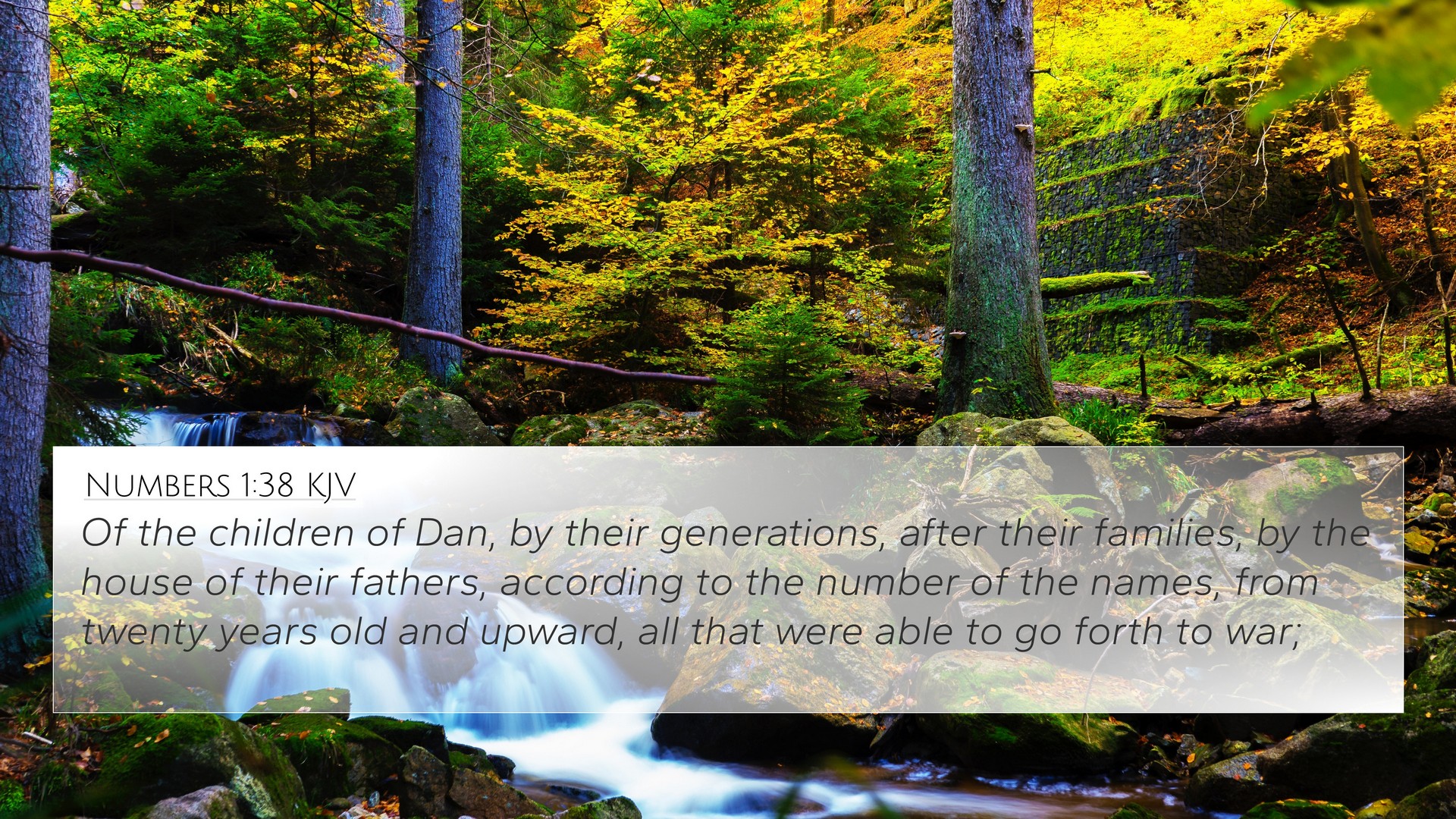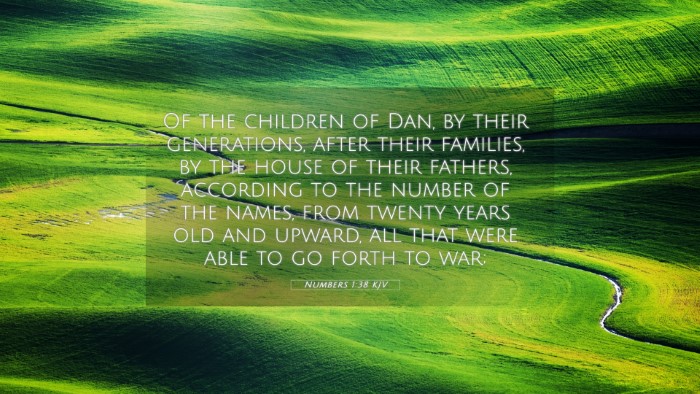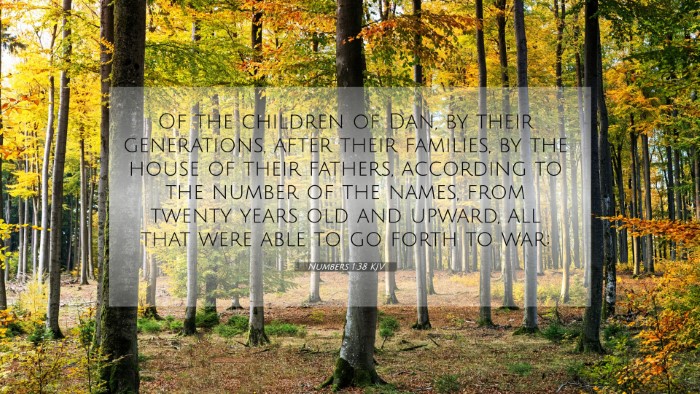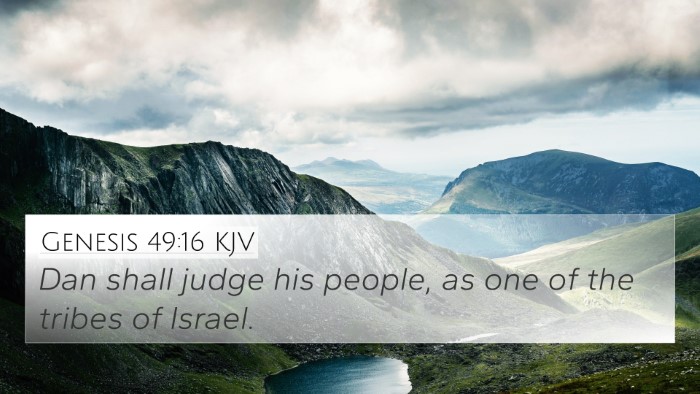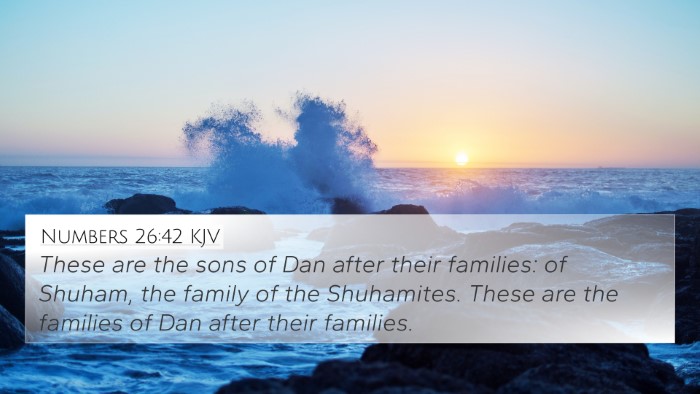Understanding Numbers 1:38
Context and Overview: Numbers 1:38 belongs to a section where Moses takes a census of the people of Israel. It specifically addresses the tribe of Judah and highlights the importance of organization among the Israelites as they journey through the wilderness.
Commentary Insights
This verse provides significant insight into:
- Census Taking: The act of counting the men of Judah signifies God's order and divine leadership.
- Identity of the Tribe: The details of number and name indicate the uniqueness of each tribe and the collective identity of Israel as God's chosen people.
Lessons from Numbers 1:38
Order in God’s House: As Matthew Henry notes, God desires His people to be organized for worship and service. This census underscores the value of structure within the community.
Divine Purpose: Albert Barnes remarks on how every number has spiritual relevance. The enumeration serves not just logistical purposes but emphasizes God’s intentional design.
Individual Valuation: Adam Clarke points out that knowing the number of men highlights the worth of each individual within the greater community, reminding believers of their importance in God’s plan.
Cross-References
To deepen your understanding of Numbers 1:38, consider these Bible verses that relate to its themes:
- Exodus 38:26: Further emphasizes the numbering and organization of God's people.
- 1 Chronicles 12:23: Illustrates the gathering of warriors for God's purposes.
- Hebrews 10:25: Connects to the importance of assembling together as God's people.
- Luke 12:7: Demonstrates God’s care for each individual, supporting the notion of personal worth.
- Romans 12:4-5: Highlights the body of Christ analogy, illustrating individual roles within the Church.
- Psalm 147:4: Speaks of God counting the stars, showcasing His attention to detail and care.
- Matthew 18:10: Encourages a view of each person as precious in God's eyes.
Thematic Connections
This verse ties into broader themes within the Bible:
- Organizational Structure: Found throughout the Old Testament as seen in Exodus 18:21-22.
- Divine Selection: Reinforced in Deuteronomy 7:6, emphasizing God's chosen people.
- Community and Unity: Reflected in Acts 2:42-47, showing the early Church’s communal nature.
Cross-Referencing Biblical Texts
Using cross-references, one can also link the Old Testament census with New Testament teachings about the Church’s organization and purpose. For example:
- Acts 6:1-7: Illustrates the need for logistical order in the spreading of the Gospel.
- 1 Corinthians 12:12-27: Discusses the body of Christ and the necessity for each part to work together.
Conclusion
Understanding Numbers 1:38 goes beyond a simple census; it reveals God's desire for His people to be counted, valued, and organized. By engaging in cross-referencing Biblical texts, one can uncover rich insights into how God works through His people. The connections between Bible verses deepen the understanding of foundational beliefs in the community of faith while showcasing the parallels between the organization of the Israelites and the early Church.
Tools for Bible Cross-Referencing: For further study, utilize resources like a Bible concordance or a Bible cross-reference guide to uncover more links and thematic connections within the Scriptures.
Keywords
This interpretation utilizes several keywords and phrases relevant to those seeking deeper understanding in their Bible study:
- Bible verse cross-references
- Connecting Bible verses
- Bible verse interpretations
- Comparative Bible verse analysis
- Bible verses that relate to each other
- Cross-referencing Biblical texts
- How to use Bible cross-references
- Bible reference resources
- Identifying connections between Old and New Testament
